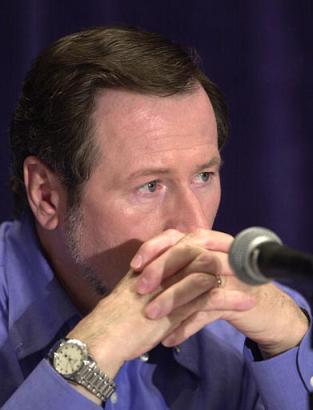The Nobel laureate who is a member of the Columbia disaster investigation committee says that he has great concern that NASA is already damaged and will not be able to withstand more tragedies unless it changes the culture that led to the wrong decision-making system

Douglas Osheroff
The Nobel laureate who is a member of the investigative committee of the Columbia disaster says that he has great concern that NASA is already damaged and will not be able to withstand more tragedies, unless it changes the culture that led to the wrong decision-making system.
"The same chain of wrong causes that led to the Challenger disaster in 1986 also led to the Columbia disaster," says Douglas Oshroff, one of the 13 members of the investigative committee currently working on writing a report on the Columbia accident.
"It doesn't matter how beautiful the report looks, if we don't do something to change the way NASA makes decisions, I say we're just whistling in the wind," Osheroff said. "Right now I'm in a state of depression," he said from his office at Stanford University.
Several members of the investigative committee said the agency needed dramatic change, but Osorov was pessimistic about the chance of such a change occurring. "In my opinion, it has been clear for a long time that what needs to change is not NASA policy, processes or management structure. I guess they also have to change, but the most important thing is the culture," he said. "Culture is a very funny thing. as an appointee This is the way people behave intuitively in different situations."
Members of the investigative committee and former NASA employees pointed to the situation of superiority, fear of being overtaken by lower-ranking employees, communication problems and strained relations between key NASA divisions as part of the cultural problems. Oshroff also makes it difficult that a number of managers who made wrong decisions during the Columbia flight, refuse to accept personal responsibility.
NASA Administrator Sean O'Keefe has promised that things will change. Just last week he said that he is committed to creating an atmosphere in which raising fingers and reporting out warnings that there is a danger to life if they are not heeded will be encouraged. However, Osheroff's personal experience tells him that it will be very difficult to achieve this. "I was at Bell Labs during the breakup of the companies, and industrial psychologists arrived to try to change the culture," he said. "I don't think it worked then, at least it didn't reach the area where I was." In the case of NASA, Osheroff and other members of the investigative committee discovered similarities between the Columbia disaster and the Challenger disaster. Even then, a very harsh report was written about NASA. However, Oshorf says, "the same chain of wrong decisions led to both disasters. In both cases there was a failure to recognize the potential risk caused by an anomaly during a flight.
In Challenger's case, this was an O-ring - a seal in the solid fuel boosters at Columbia. It was insulating foam that fell from the fuel tank and created a hole in the shuttle's left wing, allowing hot gases to enter during reentry into the atmosphere.
In both cases, warnings from engineers were not heard - or were ignored. Foam fell several times from the tanks and damaged the shuttles during the launch, but the problem was never fixed. On Columbia's last launch, the largest chunk of foam to date fell and hit with deadly force.
Boston College sociology professor Diane Wagham, author of "The Challenger Launch Decision," shares Osheroff's concerns. Challenger, like Columbia, was an organizational failure. This was not just a problem in the structure of the decision-making process. It has to do with the whole organization and its culture, and the critical part is that NASA has never really changed. Wagham said. It states that the heads of NASA may not have understood how their organization works and therefore may not know how to fix the organization and the members of the investigative committee should point in the report to the right directions."
Right from the start, O'Keefe promised to carry out all the committee's recommendations. He has already begun to reorganize the engineering and safety center in Virginia to independently examine a wide range of faults and trends, but Oshroff calls this "easy to do six months after a major disaster, the question is whether it will continue."
The physicist, winner of the Nobel Prize in 1996, was appointed as a member of the investigative committee after the chairman of the committee decided that he needed heavy delicacies. Osheroff was also a student of the late Richard Feynman, a Nobel laureate in physics who visited NASA when he served on the Challenger Disaster Commission of Inquiry.
Gehman has not yet responded to Osheroff's comments, and there are no responses from other members of the committee either. The director of NASA commented on the report a few weeks ago and warned his employees that it would be extremely ugly. Members of Congress called on Gehman to reconvene the members of the committee in a year to examine whether NASA is carrying out the recommendations.
Oshroff warns that the new NASA task force looking into returning the shuttles to flight may succumb to pressure to do so quickly due to the need to service the International Space Station. It will therefore be essential to convene the members of the committee again as soon as possible. said.
